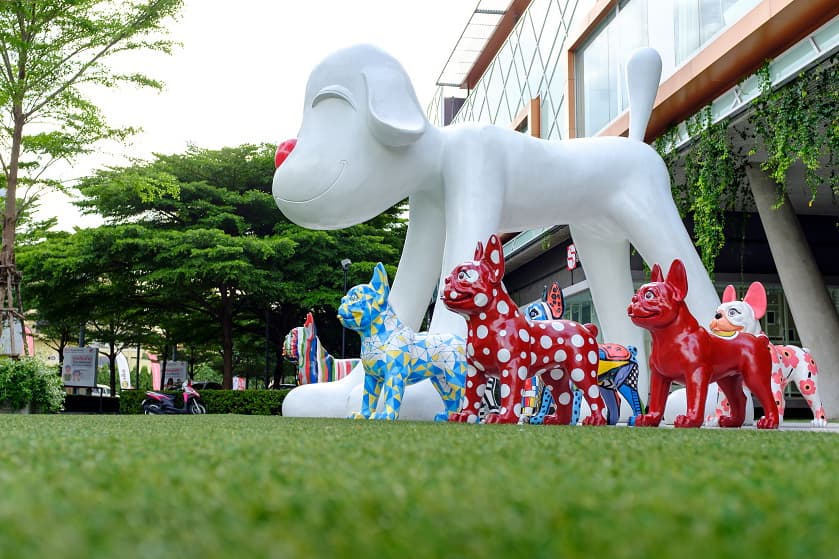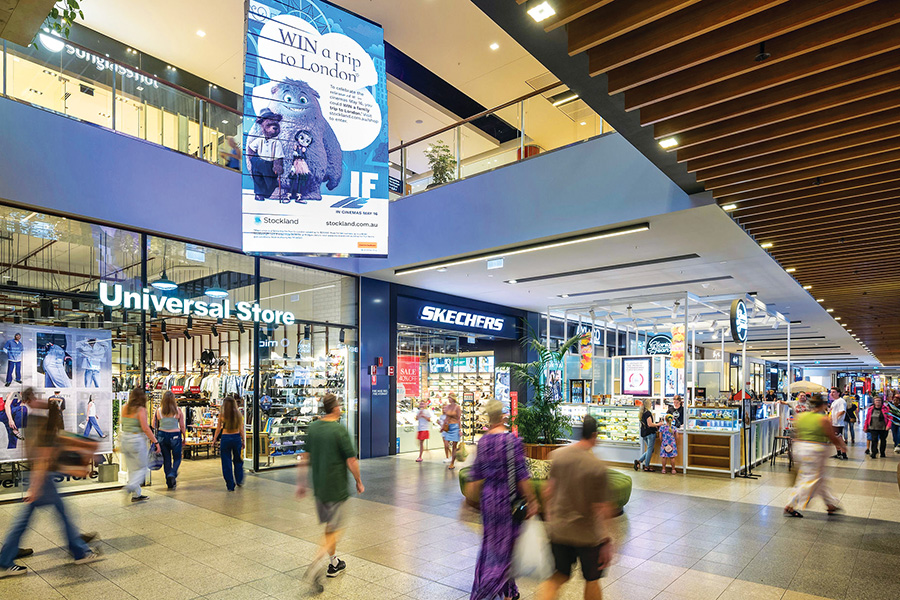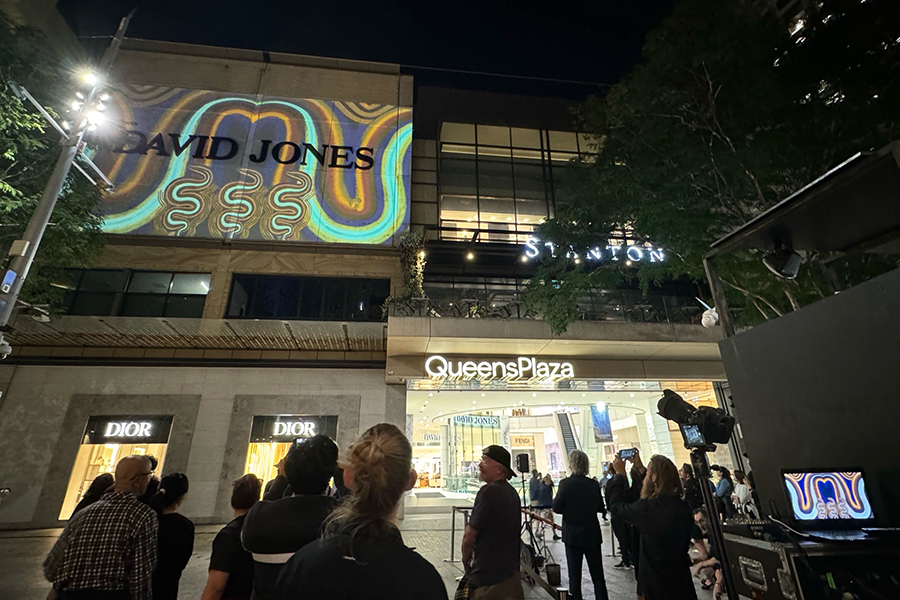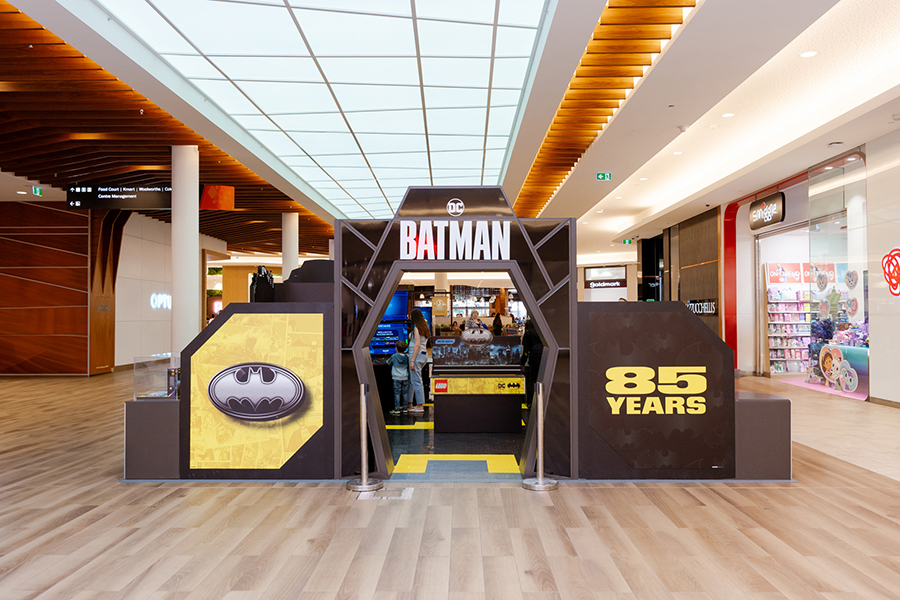Krystahlie Weight, marketing and retail experience expert from The Gallery talks about how things have changed in the world of shopping centre marketing and how the shine is still there when it comes to marketing during a pandemic.
There’s a particular charm about bricks-and-mortar shopping and physical retail stores. Whether it’s the rush of waiting in line for hours at the Apple store to get your hands on the latest iPhone, or the sensory experiences from shopping in store; the sounds, smells and the luxury of being able to touch and feel that faux fur coat you’ve been eyeing off… It’s unlike any other online shopping experience.
In our current pandemic (slightly apocalyptic) climate it’s safe to say retail stores have been suffering, but it’s important to note that spending hasn’t decreased. Data shows — thanks to various government stimulus packages — that consumer spending has actually increased.
As we enter a new financial year, we’re analysing the various ways the in-store experience will need to evolve in a post-pandemic world in order to survive. Here are five ways we see the physical store and in-store experience evolving in the future…
Socially distanced layout strategies
To encourage social distancing, many stores and shopping centres have introduced various traffic diversion tactics such as one-way entry and exits points to avoid customers coming too close into contact with each other. More often, we’re seeing this practice being employed in shopping centres and retail stores to encourage the 1.5m rule and recommended hand hygiene.
Traffic Diversion Tactics will become commonplace.
Designated entry and exit points promote a steady flow of traffic and help to manage capacity limits in store and encourage social distancing. It’s likely we’re going to see this protocol become the norm across retail centres and precincts.
Improved hygiene practices
Last but not least, we’re anticipating improved cleaning and hygiene practices across the board. For years, hygiene in shopping centres and retail stores has needed an overhaul. It’s often been somewhat overlooked; it’s occurred but hasn’t always attracted the same level of detail or care that we’re now seeing. Looking back (pre-COVID-19) rarely would you see cleaners out during business hours sanitising surfaces every couple of hours or regularly cleaning the handrails on escalators.
Employing better hygiene practices will become the new expectation.
Whether it’s introducing temporary sanitisation stations as you enter a store or employing more cleaners to service common areas like food courts and walkways more regularly, we’re expecting this welcome change to stick around for a while. We’re also seeing many shopping centres barricading and removing seating areas in order to encourage customers to keep moving along and socially distance themselves from each other which could also become a permanent solution.
Fewer fitting rooms
They’re used daily by most customers that walk through the doors and although the risk of infection of COVID-19 from contact of fabrics and clothing is reasonably low, there’s still a risk factor. It’s important to note that fitting rooms are a key contributor to a successful in-store shopping experience, so getting rid of them altogether is not an option. However, reimagining the way we access fitting rooms is essential for survival.
Fitting rooms may look a little different.
Some stores are reducing the number of fitting rooms available or even closing some or all of their fitting rooms for the foreseeable future. The most obvious choice is to employ more thorough cleaning practices which all contribute to protecting customers and retail staff against harmful pathogens but who knows what the future holds for in-store fitting rooms. Maybe we’ll be downloading apps and using virtual fitting rooms while in-store soon!
In-centre marketing
Gone are the days when we could all gather in a confined space to enjoy an in-centre activation or campaign event. Due to new social distancing regulations and capacity limits, it’s quite likely that we might not see an in-centre campaign event for a while. Activations have a central job, and that’s to draw crowds so in a post-pandemic world marketing tactics will need to evolve to suit the new and continually evolving landscape.
More installations, less activations.
It’s likely that we’ll be seeing more installations to draw crowds in-store and in-centre. Large-scale events may become a thing of the past or at least until we have the confidence, that only a vaccine can provide, to attend populated events. These will likely become more digital too. Think, augmented and virtual reality installations supported by an app download.
It’s safe to say that we’re all going to have re-think the way we’ve been doing things so far. We’re in unprecedented times and unfortunately there’s no playbook for “how to get through a pandemic on top”, but with a little strategy and the predictability of human behaviour we can evolve and change to suit the new ‘world’ we find ourselves in.





















